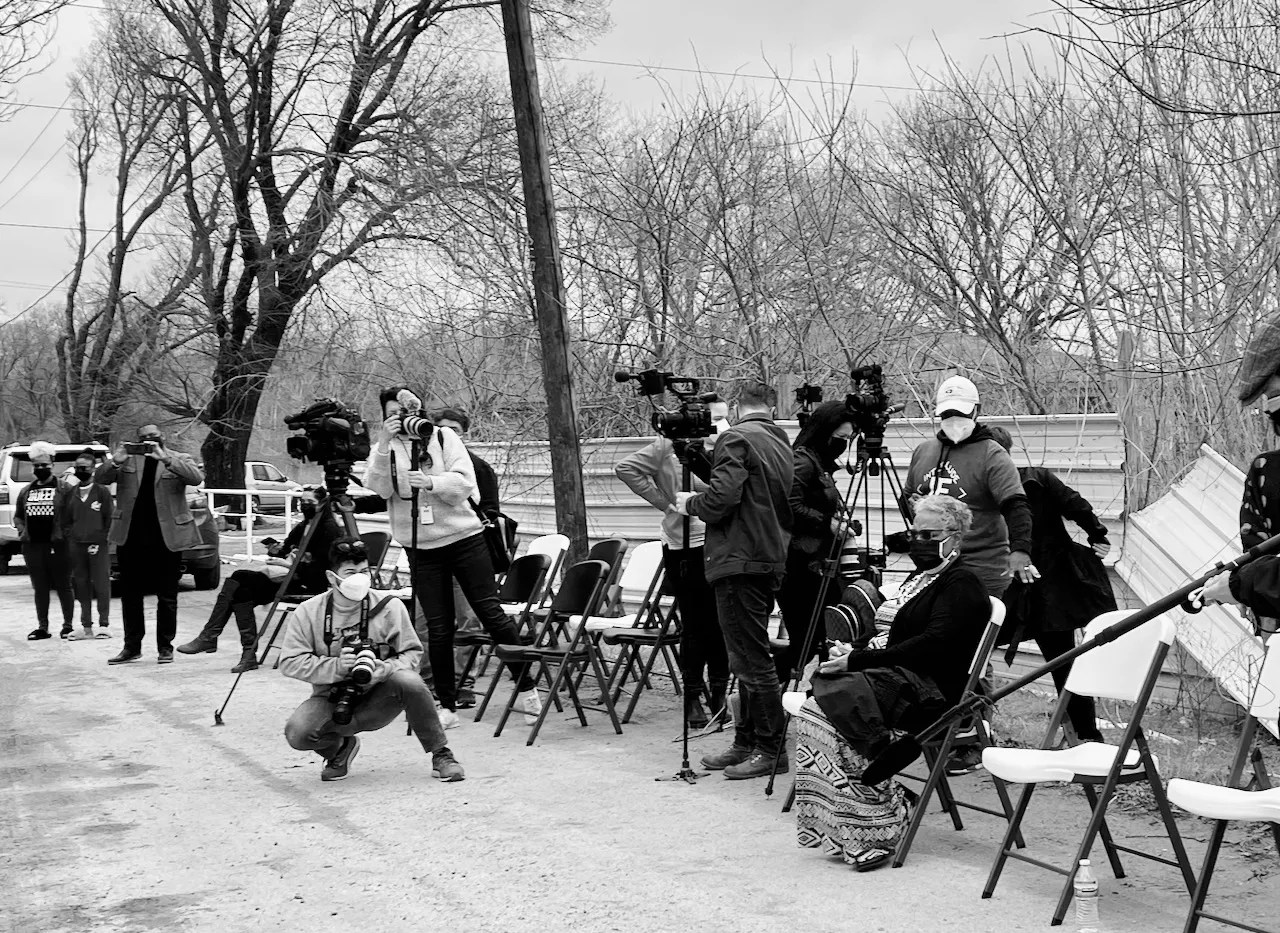
Lauren Drewes Daniels

Audio By Carbonatix
CORRECTION, 5/10/22: This story has been updated to reflect that the Environmental Commission’s vote will come after the City Council’s vote.
On Wednesday, the Dallas City Council will vote over whether to allocate funds to immediately begin remediating the land where Shingle Mountain was erected. The city’s Environmental Commission will then conduct a symbolic vote on the issue.
Last year, the city finished removing the 60,000-100,000 tons of used shingles that formed the mountain and reportedly caused health issues for residents in the area.
Last April and June, an environmental assessment of the site was completed that found levels of lead in the soil exceeded residential standards. By July 2021, the city had acquired the property. But, the work is far from finished. If everything goes according to plan, the site could be completely ready for residential use by summer 2024, according to the Office of Environmental Quality and Sustainability.
Shingle Mountain recently got some more national coverage on Last Week Tonight with John Oliver. “As we’ve discussed before on this comedy show, it was explicit federal policy for decades to segregate housing based on race through a process known as ‘redlining,'” Oliver explained. “Basically, Black people could not get government-backed home loans where white people lived, and the areas where they could live were often also zoned for industrial uses.”
Oliver pointed to Shingle Mountain and parts of town like Floral Farms and Joppa as examples of where people of color in Dallas have been forced to live with industrial development.
The mountain was there thanks to Blue Star Recycling. The recycling company bought the land in January 2018 so it could have a place to grind and pile discarded shingles. The mountain grew taller even as residents complained to the city. The recycling company initially said only 260 tons of the material would be kept on the site, far from the tens of thousands of tons that would end up there. The neighborhood fought to have all the shingles removed. The last ones were hauled off early last year.
But there are still a few things that need to happen to make it compatible with planned residential uses. Another assessment of the site needs to be completed, according to the Office of Environmental Quality and Sustainability. Then, the site should be entered into the Texas Commission on Environmental Quality’s voluntary cleanup program because contamination levels exceeded residential standards. From there, while the cleanup is underway, additional temporary storm water controls can be installed. Once the TCEQ cleanup is finished, the site will get a certificate saying so and that it’s fit for residential use.
The Office of Environmental Quality and Sustainability hopes the final assessment and the site’s enrollment into TCEQ’s voluntary cleanup program can happen this month. They want the assessment to be finished and submitted to the TCEQ by August, so the remediation can begin in summer 2023. This will set the remediation on track to be finished sometime between fall 2023 and summer 2024.
The clock is ticking on the cleanup as residents in Floral Farms hope the site will one day be home to a park as part of a neighborhood-led plan they drafted in last February. For that plan to come to fruition, the zoning needs to be changed for this part of town. For decades, the land the neighborhood sits on has been zoned for industrial development. They can only get the zoning changed through a hearing in front of the City Plan Commission. The neighborhood has already started that process, but it’s unclear how long it will take.
“The remediation and authorized hearing are two separate, concurrent processes,” Kathryn Bazan, chair of the Environmental Commission, said. “The commission’s focus on the characterization and remediation to residential standards will support and advance any future use that is determined by the authorized hearing process.”
Bazan said the City Council is considered appropriating $2 million for such remediation at its meeting this Wednesday. Bazan said if funds are approved, the remediation efforts will be tracked and updated by the Environmental Commission and the city’s Environment and Sustainability committee.